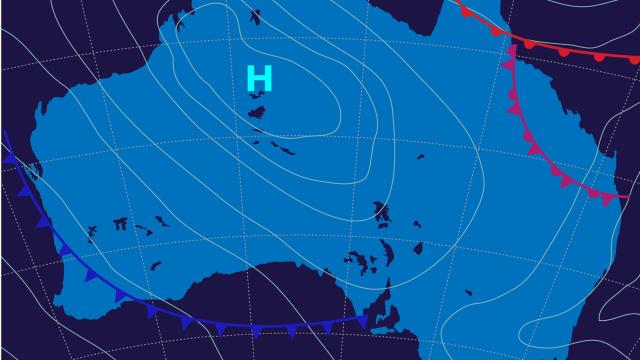On Indigenous Literacy Day this year, Studio 10 went through and explained that traditionally, Australia observes more than just four seasons in its calendar. In a delightfully refreshing move, weather presenter Josh Holt then proceeded to give the weather forecast according to different Aboriginal and Torres Strait Islander community calendars.
Studio 10 panellist and Whadjuk Noongar woman, Narelda Jacobs, went ahead and shared the informative guide to Instagram, explaining that depending on which country you’re living on, there can be anywhere between four and six seasons in Indigenous seasonal calendars.
She added that this is “way more accurate than the four seasons we’re used to”. And it makes a lot of sense. Aboriginal and Torres Strait Islander peoples have lived on and worked with this land for many thousands of years; their understanding of it far surpasses that of the modern calendar system.
What many of you may not know is that the Australian Bureau of Meteorology actually has an entire guide to Indigenous weather knowledge on its website. You can use this to see which traditional seasons are relevant to the country you’re living on.
The full Aussie map has been broken down by community, from which you can check out each of the applicable seasons.
Here are a few examples for you.
D’harawal calendar
As the BOM website reads:
The D’harawal Country and language area extends from the southern shores of Port Jackson (Sydney Harbour) to the northern shores of the Shoalhaven River, and from the eastern shores of the Wollondilly River system to the eastern seaboard.
This calendar has six seasons: Burran (January-March), Marrai’gang (April-June), Burrugin (June-July), Wiritjiribin (July-August), Ngoonungi (September-October), and Parra’dowee (November-December).
We’ve just moved into the Ngoonungi season now, which is described as “Cool becoming warm” and is known as the season where “flying foxes appear, Ceremonial time, Miwa Gawaian in flower”.
You can see a more detailed exploration of the seasons for D’harawal here.
Gariwerd calendar
As the BOM website reads:
There are six distinct weather periods recognised in the Gariwerd seasonal cycle. The language groups, Djapwurrong and Jardwadjali are the languages used by the custodians for the Grampians/Gariwerd region.
The seasons include: Kooyang (January-March), Gwangal moronn (March-May), Chunnup (May-July), Larneuk (July-August), Petyan (September-November) and Ballambar (November-January).
Petyan kicks off in September and is categorised as Spring, known for “Wildflower season, Tempestuous weather, Warmer days, Bush bursts into life, Emu constellation appears”.
Have a closer look for yourselves here.
Nyoongar calendar
The BOM website reads:
Nyoongar country spans from Leeman in the northwest to beyond Cape Arid in the southeast, in the southwest of Australia. The Nyoongar calendar includes six seasons.
The six seasons of the Nyoongar calendar are: Birak (December-January), Bunuru (February-March), Djeran (April-May), Makuru (June-July), Djilba (August-September) and Kambarang (October-November).
Presently, Nyoongar country is sitting in Djilba or First spring, which is known for the “Season of conception, Mixture of wet days with increasing number of clear, cold nights and pleasant warm days.”
You can read on here.
As the BOM puts it: “Aboriginal and Torres Strait Islander people have developed an intricate understanding of the environment over many thousands of years” – which is something we can all stand to learn from (as recent bushfire seasons have shown).
This resource is a signal of the bureau’s “commitment to strengthening respectful and collaborative relationships with Aboriginal and Torres Strait Islander people”.
It’s also a really lovely way to educate yourself on the deep knowledge and history of Aboriginal and Torres Strait Islander communities here in Australia. See the entire Indigenous weather knowledge map here.
The traditional weather report on Studio 10 follows efforts back in July to recognise traditional place names during NAIDOC Week while giving weather reports.
If you would like to learn more about the First Nations country you live and work on you can keep reading here.

Leave a Reply
You must be logged in to post a comment.